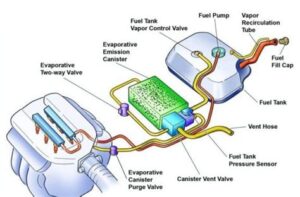Explore the fundamentals of connexion systems, their key components, roles in modern infrastructure, and benefits for future projects. In today’s fast-paced world, the importance of robust and efficient connexion systems and engineering cannot be overstated. These systems serve as the backbone of modern infrastructure, enabling seamless communication and connectivity across various sectors. As industries evolve, understanding the basics of connexion systems is crucial for any organization looking to enhance operational efficiency. This article delves into the key components of connexion systems engineering, their vital role in contemporary infrastructure, and how they can be developed for future projects. Additionally, we will explore the numerous benefits of implementing advanced connexion systems, ensuring your organization stays ahead in an increasingly interconnected world. Join us as we unravel the intricacies of connexion systems and their transformative impact on our environment.
Understanding The Basics of Connexion Systems
Connexion systems are integral frameworks that connect various components in a cohesive manner, facilitating effective communication and data transfer among different systems. These systems are designed to ensure seamless integration, allowing diverse technologies to work together efficiently. Here, we delve into the foundational aspects of connexion systems and how they play a crucial role in various industries.
At the core of connexion systems is the concept of interoperability. This refers to the ability of different systems and devices to exchange and make use of information. Interoperability is essential for enhancing operational efficiency, as it minimizes the complexities involved in technology integration. Such systems often encompass both hardware and software components, with each playing a pivotal role in the overall functionality.
Another fundamental element of connexion systems is standardization. By adhering to common protocols and formats, these systems can ensure compatibility among a range of devices and applications. This not only simplifies the design and implementation processes but also enhances scalability and flexibility in adapting to future technological advancements.
Furthermore, connexion systems utilize various communication methods, including wired and wireless technologies, to facilitate data transfer. This versatility allows for implementation in diverse environments, from industrial settings to smart homes, creating robust networks that enhance overall productivity.
As industries continue to evolve, understanding the basics of connexion systems is essential for leveraging their benefits in modern infrastructure and driving future innovations. This foundational knowledge sets the stage for exploring the key components and applications that further enhance the efficacy of connexion systems in various sectors.
Key Components In Connexion Systems Engineering
In the field of connexion systems engineering, understanding the key components is crucial for successful project implementation and infrastructure development. These components are interrelated parts that work together to create an efficient and effective system. Here are the main elements:
- Connectivity Elements: These include cables, connectors, and wireless technology that facilitate the transfer of data and power throughout the system.
- Control Systems: Software and hardware that monitor and manage the connections, ensuring they function as intended. These may involve network management tools and control algorithms.
- Interface Devices: Devices that serve as points of interaction between different systems or components, such as routers and gateways.
- Data Management Solutions: Systems that handle data storage, processing, and analysis to optimize performance and facilitate decision-making.
- Security Measures: Protocols and technologies ensuring that the connexion systems are protected from unauthorized access and cyber threats.
- Monitoring Infrastructure: Tools that allow real-time assessment of system performance, identifying issues before they escalate.
Each of these components plays a critical role in the overall functionality of connexion systems, and understanding their interplay is essential for engineers and stakeholders involved in the design and implementation of contemporary infrastructure solutions.
The Role of Connexion Systems In Modern Infrastructure
Connexion systems play a crucial role in the evolution of modern infrastructure, serving as the backbone for various functionalities across diverse sectors. These systems enhance connectivity, collaboration, and efficiency in operations, making them indispensable in today’s fast-paced environment.
One of the primary functions of connexion systems is to streamline communication between different infrastructure components. For instance, in urban areas, smart city initiatives rely heavily on integrated connexion systems that allow disparate data sources to interact effectively. This ensures better resource management and improved sustainability, leading to enhanced quality of life for residents.
In transportation, connexion systems optimize traffic management through real-time data sharing between vehicles and infrastructure. This connectivity reduces congestion, enhances safety, and enables the development of smart transportation solutions, such as autonomous vehicles that depend on reliable connexion systems for navigation and communication.
Moreover, in the construction industry, connexion systems facilitate the collaboration of various stakeholders by providing a platform for data exchange, project management, and monitoring. This leads to higher efficiency, reduced costs, and improved project timelines, essential for meeting contemporary demands.
Overall, the integration of connexion systems in modern infrastructure not only enhances operational effectiveness but also fosters innovation, driving forward the advancement of smart cities, intelligent transport systems, and other critical infrastructure components.
Developing Efficient Connexion Systems For Future Projects
As we look toward the future, the development of efficient connexion systems becomes increasingly critical for ensuring that our infrastructure meets both current and anticipated demands. To achieve this goal, several strategies and methodologies can be employed.
Firstly, embracing innovation in technology is essential. Utilizing smart technologies, such as IoT and AI, can optimize connexion systems by enabling real-time monitoring and data collection. This allows for adaptive responses to changing conditions and improves overall system efficiency.
Secondly, designing systems with sustainability in mind ensures that future projects incorporate energy-efficient resources and materials. Implementing renewable energy sources can significantly reduce the environmental impact while improving the longevity and resilience of connexion systems.
Collaboration among multidisciplinary teams is also vital. Engaging engineers, architects, and urban planners early in the project development phase fosters a holistic approach that can identify potential challenges and solutions more effectively. This collaboration can enhance the integration of various components within connexion systems to create a seamless operation.
Finally, ongoing training and upskilling of workforce personnel ensure that project teams are equipped with the latest knowledge and techniques for implementing these systems. Keeping abreast of industry advancements and best practices is crucial for developing efficient connexion systems that can adapt to future challenges and technologies.
Benefits of Implementing Advanced Connexion Systems
Implementing advanced connexion systems offers numerous benefits that can significantly enhance efficiency, reliability, and functionality within various industries. Some of the key advantages include:
| Benefit | Description |
|---|---|
| Increased Efficiency | Advanced connexion systems streamline operations, reducing time and resources required for processes. |
| Enhanced Reliability | These systems provide robust connections that ensure consistent performance, minimizing downtime. |
| Scalability | Modern connexion systems are designed to adapt easily to expanding project needs without significant overhauls. |
| Improved Safety | With advanced technology, potential hazards can be managed more effectively, promoting a safer working environment. |
| Cost-Effectiveness | Long-term savings can be realized through reduced maintenance costs and enhanced energy efficiency associated with these systems. |
In summary, the integration of advanced connexion systems is pivotal for organizations seeking to modernize their infrastructure and improve overall productivity. From operational efficiency to enhanced safety, the advantages they bring are essential to staying competitive in today’s market.
Frequently Asked Questions
What are connexion systems in engineering?
Connexion systems refer to integrated frameworks and methodologies used in engineering to facilitate seamless connections and collaborations among various components, systems, and stakeholders in a project.
Why are connexion systems important in engineering projects?
Connexion systems are crucial as they enhance communication, improve efficiency, streamline processes, and ultimately lead to better project outcomes by ensuring that all parts of the project work together harmoniously.
What role does technology play in connexion systems?
Technology is integral to connexion systems as it provides tools and platforms for data sharing, real-time communication, and collaborative work, which are essential for efficient project management in engineering.
Can you give examples of tools used in connexion systems?
Common tools include project management software like Trello or Asana, communication platforms such as Slack or Microsoft Teams, and engineering design software like AutoCAD or SolidWorks which facilitate collaboration among teams.
How do connexion systems enhance collaboration between teams?
Connexion systems foster collaboration by providing a centralized platform for communication, allowing for effective sharing of ideas, resources, and feedback, which can lead to more innovative solutions and quicker decision-making.
What are the challenges faced when implementing connexion systems?
Challenges may include resistance to change from team members, integration difficulties between old and new processes, and ensuring adequate training and support for all users to maximize the potential of the new systems.
What future trends can we expect in connexion systems and engineering?
Future trends may involve increased use of artificial intelligence and machine learning to enhance predictive analytics, more advanced virtual collaboration tools, and a greater focus on sustainability and energy efficiency in engineering processes.





